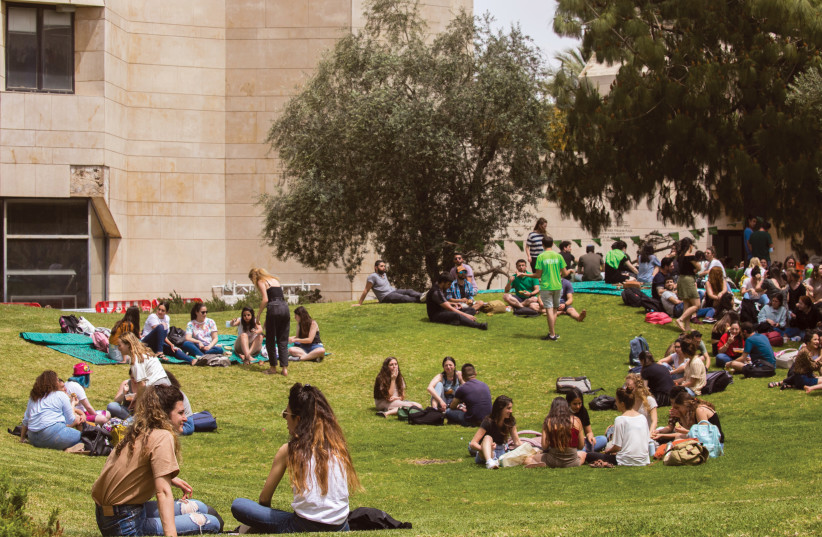The study was led by Prof. Aviv Major and Dr. Roy Schur.
 Students at the Hebrew University’s Mount Scopus campus in Jerusalem earlier this year. (credit: Olivier Fitoussi/Flash90)
Students at the Hebrew University’s Mount Scopus campus in Jerusalem earlier this year. (credit: Olivier Fitoussi/Flash90)
Mazer and Schur describe that using the nearly 140-year-old “Nissl Stein Method”, which is ubiquitous in the study of neurons in the human brain, they can more easily observe cells in the white matter, which would have been composed mostly of Nerve fibers and a group of cells called glia.
The HU team is the first to use Nissl stained brain slices to reveal fiber pathways in white matter.
This new technique, named “Nissl-ST” (Nissl-based structure tensor) by the HU researchers, can be applied to any brain slice that has undergone Nissl staining. Nissl staining is also widely available and used universally, so this breakthrough in white matter research will help research teams around the world to trace their discoveries.
The new method was discovered when, as a doctoral student, Prof. During Schur’s stint in Mazer’s laboratory, he decided to look at some photographs of Nissl-stained brain tissue. To his surprise, he observed that the glial cells formed a pattern of short rows, which appeared to align with local nerve fibers.
“It was just curiosity,” Schur explains. “Textbooks are full of illustrations, but I wanted to understand what the white matter of the brain really looked like.”
Schur and Meijer then realized that using simple image processing tools, they could use the patterned cell structure to uncover white-matter architecture.
Pro. “When we first applied this technique to a Nissl-stained piece of brain, I was amazed,” Meijer said. “We immediately recognized this as an important piece of the puzzle that scientists are exploring in the study of white matter.”